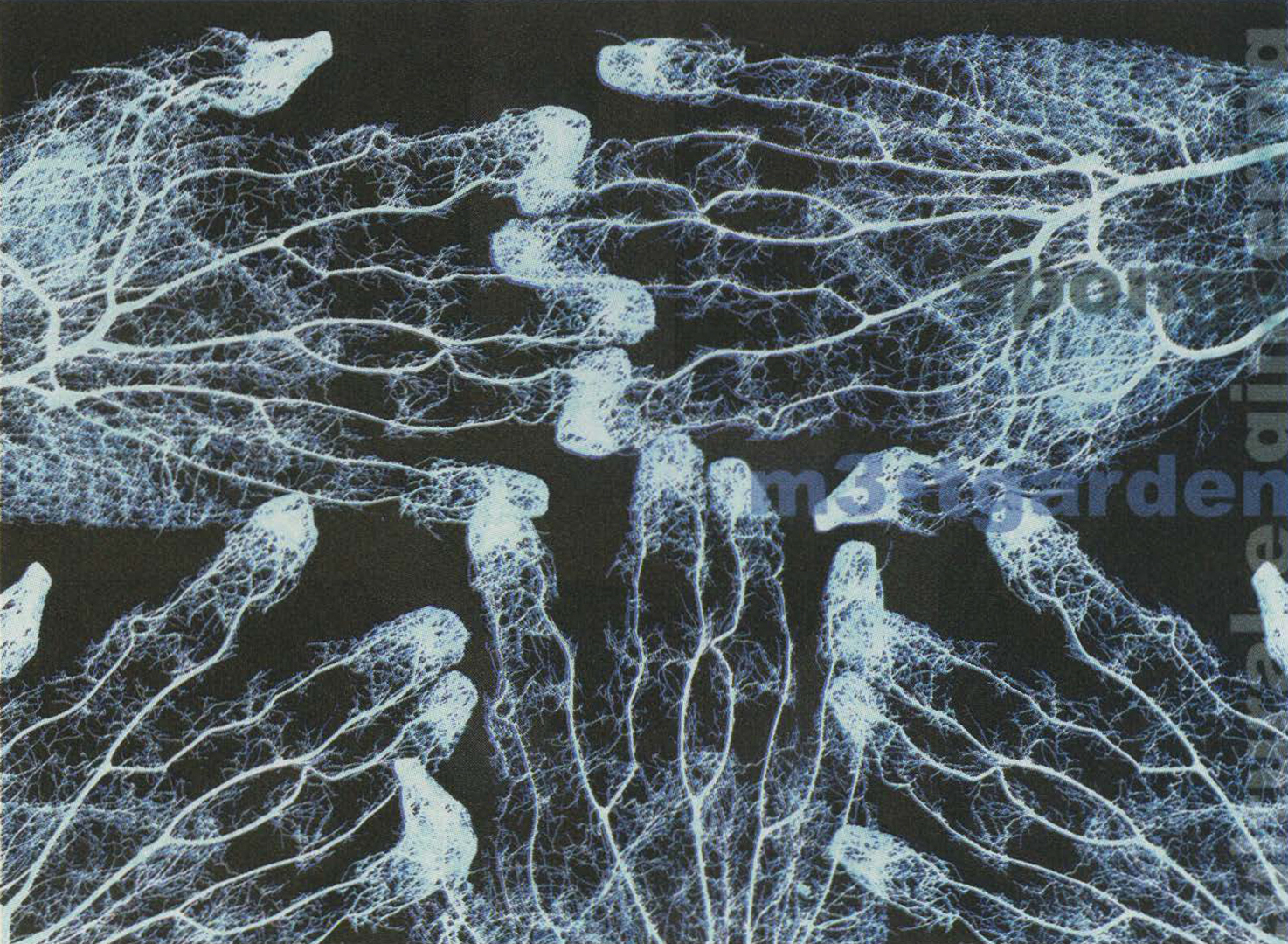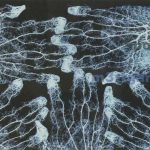Sponge: M3: T-Garden
Artist(s):
Title:
- M3: T-Garden
Exhibition:
Creation Year:
- 2000
Category:
Artist Statement:
T-Garden is the third room in a proposed performance and social investigation called M3. It is a responsive environment where visitors can put on sound and dance with images in a tangible way to construct musical and visual worlds “on the fly.” The play space dissolves the lines between performer and spectator by creating a social, computational, and media architecture that allows the players to shape patterns in the dynamical environment.
As visitors enter the performance space, they find an array of sumptuous clothing that they can choose to wear. The clothing has specific exaggerated physical qualities (for example, weight, size, and material). It is embedded with wearable sensing, computing, and signal processing devices as well as small audio speakers. Individually, the visitors enter into several separate vestibules or rehearsal studios where they can play with streams of sounds and compositional effects broadcast by wireless audio throughout the room. They can explore the aural and physical properties of their garment-instrument, and gradually learn how to modulate and change the sounds they are receiving.
After practicing, the players enter a circular room thick with sound and image. The curved walls and floor are covered with transforming, polymorphous video and computer-generated textures: archaeologies of bodies, aquatic organic forms, elemental and microscopic liquid, and solid state changes. These phantasmagoric textures appear to breathe and dance according to the sound patterns in the room. In this garden, as the visitors pass near each other, their clothes appear to howl and squeal, as if patterns of sound and image are “bleeding” from one body to another. As the visitors move about, their locations and groupings strengthen and lighten the density of the visual environment while varying the melodic and rhythmic aspects of the sound space. Memory, population density, and bodily proximity affect the dynamics of the room, causing growth, decay, infection, and contamination in the visual environment. Embedded performers also inhabit the room and affect the basic sound structures of the environment, providing the cantus firmus in a dense and changing polyphony of rhythms and melodies generated by the visitors’ gestures and motions.
The room’s media are stirred not by explicit speech and command but by half-noticed gestures and flows of fabric and resonating air that halo the participants’ conscious activity.
Contributors:
Sha Xin Wei
Chris Salter
Laura Farabough
Maja Kuzmanovic
Evelina Kusaite
Cynthia Bohner-Vloet
Sam Auinger
Joel Ryan
Ozan Cakmakci
Kristof Van Laerhoven
Els Fonteyne
Walter van de Velde
Adam Lindsay
David Tonnessen






